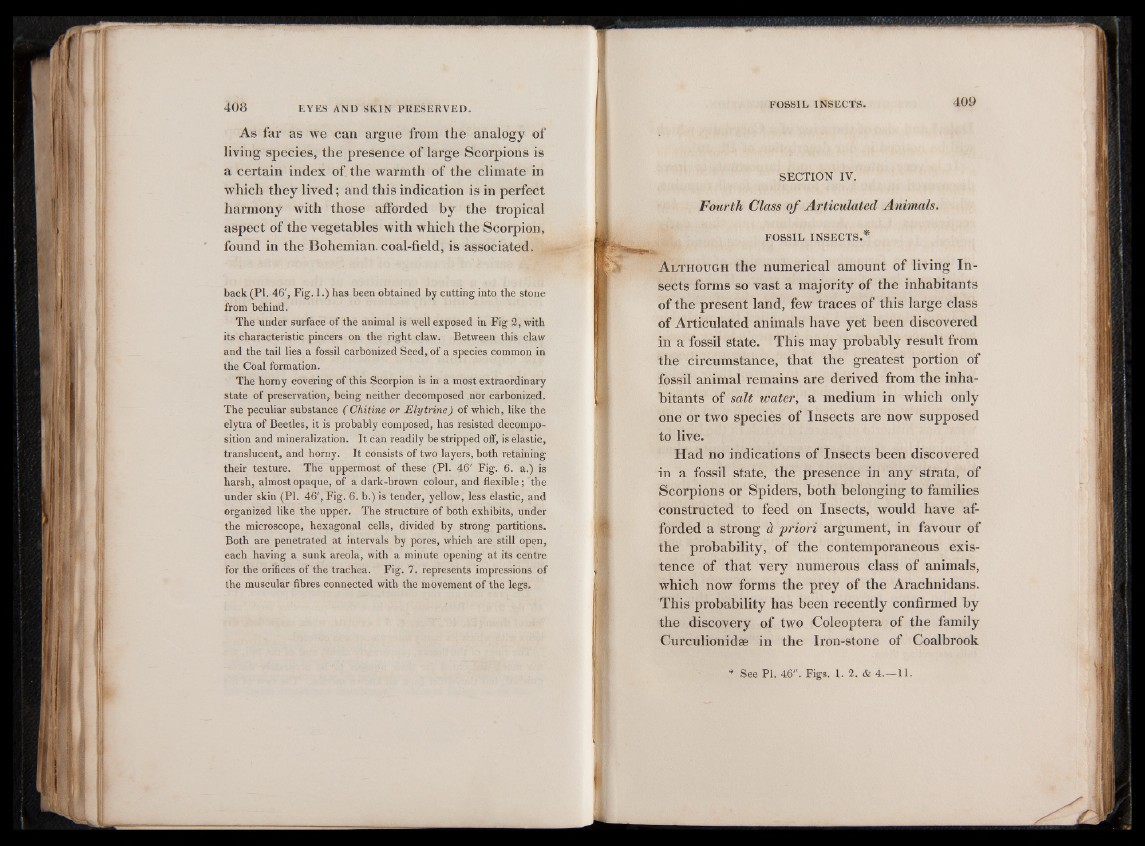
As far as we can argue from the analogy of
living species, the presence of large Scorpions is
a certain index of the warmth of the climate in
which they lived; and this indication is in perfect
harmony with those afforded by the tropical
aspect of the vegetables with which the Scorpion,
found in the Bohemian, coal-field, is associated.
back (PI. 46', Fig. 1.) has been obtained by cutting into the stone
from behind.
The under surface of the animal is well exposed in Fig 2, with
its characteristic pincers on the right claw. Between this claw
and the tail lies a fossil carbonized Seed, of a species common in
the Coal formation.
The horny covering of this Scorpion is in a most extraordinary
state of preservation, being neither decomposed nor carbonized.
The peculiar substance ( Chitine or Ely trine) of which, like the
elytra of Beetles, it is probably composed, has resisted decomposition
and mineralization. It can readily be stripped off, is elastic,
translucent, and horny. It consists of two layers, both retaining
their texture. The uppermost of these (PI. 46' Fig. 6. a.) is
harsh, almost opaque, of a dark-brown colour, and flexible; the
under skin (PI. 46', Fig. 6. b.) is tender, yellow, less elastic, and
organized like the upper. The structure of both exhibits, under
the microscope, hexagonal cells, divided by strong partitions.
Both are penetrated at intervals by pores, which are still open,
each having a sunk areola, with a minute opening at its centre
for the orifices of the trachea. Fig. 7. represents impressions of
the muscular fibres connected with the movement of the legs.
SECTION IV.
Fourth Class of Articulated Animals.
FOSSIL IN SEC T S .*
A l t h o u g h the numerical amount of living Insects
forms so vast a majority of the inhabitants
of the present land, few traces of this large class
of Articulated animals have yet been discovered
in a fossil state. This may probably result from
the circumstance, that the greatest portion of
fossil animal remains are derived from the inhabitants
of salt water, a medium in which only
one or two species of Insects are now supposed
to live.
Had no indications of Insects been discovered
in a fossil state, the presence in any strata, of
Scorpions or Spiders, both belonging to families
constructed to feed on Insects, would have afforded
a strong à priori argument, in favour of
the probability, of the contemporaneous existence
of that very numerous class of animals,
which now forms the prey of the Arachnidans.
This probability has been recently confirmed by
the discovery of two Coleoptera of the family
Curculionidæ in the Iron-stone of Coalbrook